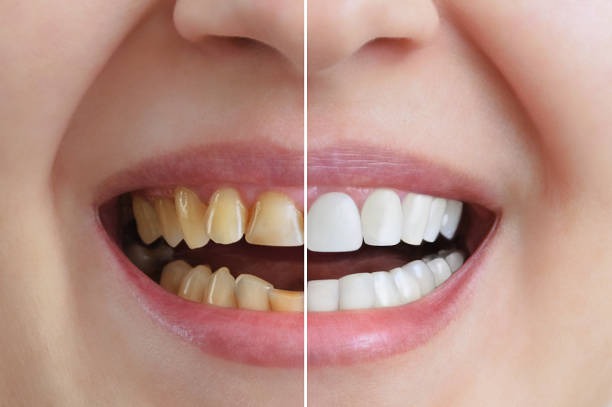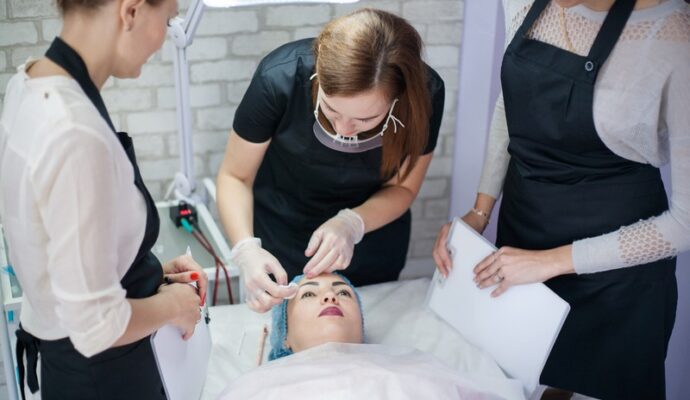Cosmetic dental procedures have become more popular than ever, and for good reason! Who doesn’t want a brighter, straighter, or more balanced smile? Still, while the desire for an aesthetic smile is universal, it’s absolutely vital to ensure your journey toward it is safe and healthy. So, what truly makes a cosmetic dental procedure safe, and how can you confidently make decisions about smile improvements? Let’s break down the key factors that set safe cosmetic dental care apart from the rest, helping you know exactly what to look for—whether you’re fixing a chipped tooth, whitening your enamel, or seeking a complete smile makeover.
Expertise and Training of the Dental Professional
If you’re considering cosmetic dental work, the first thing to check is your dentist’s expertise. Not every dentist is a cosmetic specialist, and it takes years of training and continued education to master the art (and science) of cosmetic procedures. Skilled cosmetic dentists will be happy to talk with you about their credentials, certifications, and professional experience.
-
Relevant Certifications: Look for professionals with certifications from reputable dental boards or organizations in cosmetic dentistry.
-
Hands-On Experience: Dentists with lots of real-world experience will have before-and-after photos, patient testimonials, and clear explanations of previous cases.
-
Ongoing Training: The field is always evolving. Ask if your dentist keeps up with new techniques and products.
Don’t be shy about asking for proof—knowing your dentist is a true expert puts your mind at ease!
Use of Safe, High-Quality Materials
The safety of any dental procedure also hinges on the quality and safety of the materials used. Cosmetic dentistry involves everything from dental veneers to composite bonding, tooth-colored fillings, and teeth-whitening agents. Subpar materials can cause allergies, deterioration, and even long-term health problems.
A reliable dentist will always choose biocompatible, durable, and proven-safe materials for your mouth. Before you begin, ask:
-
Are the dental materials approved by regulatory agencies (like the FDA)?
-
Do the bonding agents or veneers used carry any allergy risks?
-
What lifespan and maintenance do these materials have?
Strict Infection Control and Sterilization
Maintaining a sterile environment is non-negotiable. All dental offices should adhere to strict protocols—think glove use, mask-wearing, disinfection of surfaces, and sterilization of tools. This isn’t just about comfort; these steps prevent the spread of infectious diseases.
Signs of Strong Infection Control
-
Disposable instruments for single-use tasks
-
Staff regularly wash their hands and change gloves
-
Treatment rooms are cleaned and sanitized after every patient
-
Use of sterilization pouches or machines (autoclaves) for reusable equipment
If you observe these safety standards during your visit, you’re likely in good hands.
Clear and Personalized Treatment Planning
A safe cosmetic dental procedure starts long before you’re in the dentist’s chair. Proper planning—including a detailed examination, dental X-rays, digital scans, and open discussion about your expectations—is critical.
What to Expect in a Comprehensive Cosmetic Work-Up
-
Initial Consultation: Your dentist should ask about your health history, smile goals, and concerns.
-
Oral Examination: Healthy teeth and gums lay the groundwork for any cosmetic work.
-
Imaging and Impressions: Digital X-rays or scans help plan procedures with precision.
-
Customized Smile Design: A tailored plan that suits your facial structure, bite, and desired outcome.
-
Reviewing Risks and Benefits: You should be made aware of all possible outcomes, not just the positives.
A dentist who rushes through this process or offers ‘cookie-cutter’ treatments may not be putting your safety first.
Open Communication and Informed Consent
Communication is the foundation of dental care safety. Your dentist should explain every step of your cosmetic procedure in plain language. This includes discussing your options, walking you through potential side effects, highlighting any risks, and giving you time to ask questions.
-
Clear Explanations: No jargon—just straightforward details about what to expect.
-
Written Consent: Never proceed without reading and signing a consent form that covers risks and benefits.
-
Time to Think: You should never feel rushed into a decision or pressured to proceed.
Technology and Innovation in Cosmetic Dentistry
Advancements in dental technology are not just about achieving better results—they’re also about minimizing risks and improving safety. Modern imaging tools, computer-aided smile design, and digital impression systems allow for extreme precision.
Key Technical Tools That Boost Safety
-
Digital 3D Impressions: More comfortable and precise than traditional molds
-
Laser Dentistry: Minimally invasive, promoting faster healing and less discomfort
-
Computer-Milled Restorations: Create accurately fitting crowns, veneers, and bridges
-
Intraoral Cameras: Help diagnose hidden issues before they become complications
Some cosmetic dentists offer tools like a smile simulator in Spring, TX, to preview your results before any treatment begins, helping to ensure expectations are realistic and outcomes are satisfactory.
Patient Health and Dental History Evaluation
Your health history directly affects which cosmetic procedures are suitable and safe for you. Chronic conditions, medication use, allergies, and prior dental work can all influence the best treatments.
-
Medical Conditions: Diabetes, autoimmune diseases, and bleeding disorders may require adjustments in care.
-
Oral Health Status: Issues like gum disease or untreated decay must be addressed before cosmetic treatments.
-
Medication Interactions: Some medications affect bleeding, healing, or oral sensitivity.
A responsible cosmetic dentist will require a thorough health questionnaire and possibly clearance from your physician before more complex work.
Minimally Invasive Cosmetic Techniques
A guiding principle for safe cosmetic dentistry is “less is more.” Whenever possible, procedures should be as conservative as possible, preserving your natural tooth structure and minimizing trauma to tissues.
-
Teeth Whitening: Non-invasive, quick, and great for most healthy mouths
-
Dental Bonding: Adds to your natural teeth with minimal or no drilling
-
Veneers: Should involve only light reshaping of your enamel
-
Clear Aligners: Move teeth gently and offer a removable, comfortable alternative to braces
Minimally invasive approaches reduce potential complications, lower healing time, and keep your smile healthy for the long haul.
Aftercare and Follow-Up Support
Safety doesn’t stop when you leave the dental chair. Post-procedure instructions are crucial, and your dental team should provide them both verbally and in writing. A good aftercare plan covers:
-
How to clean and care for treated teeth
-
Foods and habits to avoid during healing
-
Signs of possible complications to watch for
-
Who to contact in case of problems
-
Scheduled follow-up visits to check your progress
Choosing a dental practice that offers check-ins and is available for questions after your appointment adds another layer of safety and peace of mind.
Alongside excellent post-procedural care, patients should maintain routine appointments for general dental cleaning and examinations. This ongoing relationship ensures that oral health remains supported and any emerging issues are spotted early.
Reputation and Recommendations Matter
The dental industry is built on trust. One way to gauge a cosmetic dentist’s safety practices is to ask for patient reviews, referrals, or online testimonials. People love to share their experiences, especially about life-changing dental improvements!
-
Positive Reviews: Look for consistent praise about safety, cleanliness, communication, and comfort.
-
Word-of-Mouth Referrals: Ask friends or family who have had cosmetic work done for their honest opinions.
-
Professional Associations: Memberships in respected dental organizations show a commitment to ongoing standards and improvement.
When researching, consider looking for dental offices specializing in cosmetic dentistry in Spring, TX, if you’re local and want to see real-life results and testimonials from your community.
Personalizing Your Safety Checklist
Every patient’s mouth, health, and desires are unique. That’s why the safest cosmetic dental procedures come from a personalized approach. Here’s a quick checklist to help you evaluate safety at your chosen dental office:
-
Did the dentist spend time understanding my expectations and concerns?
-
Were all options, risks, and benefits explained clearly and patiently?
-
Did the initial assessment feel thorough and unrushed?
-
Were infection control standards noticeably high?
-
Were safe, modern materials and technologies used?
-
Was my health history evaluated in full?
-
Was the plan conservative and designed for longevity?
-
Am I clear on what to do after the procedure?
If you can answer ‘yes’ to all these questions, you’re well on your way to a safe and successful cosmetic dental experience.
Remember, prioritizing both aesthetics and safety is always possible—but only with a team that values total health as much as your smile’s appearance. If you value a standard of excellence in oral health, a clinic focused on comprehensive services like Spring dental care can be a reassuring option.
Final Thoughts
Cosmetic dental work is an investment in your health, confidence, and happiness. But safety comes first, always. From skilled professionals and high-quality materials to transparent communication, personalized care, and robust aftercare, choosing the right provider ensures you can enjoy your new smile for years to come. Take your time, do your research, and—most importantly—trust your instincts. After all, the best cosmetic dental procedure is one that restores your confidence safely, beautifully, and with your well-being front and center.




